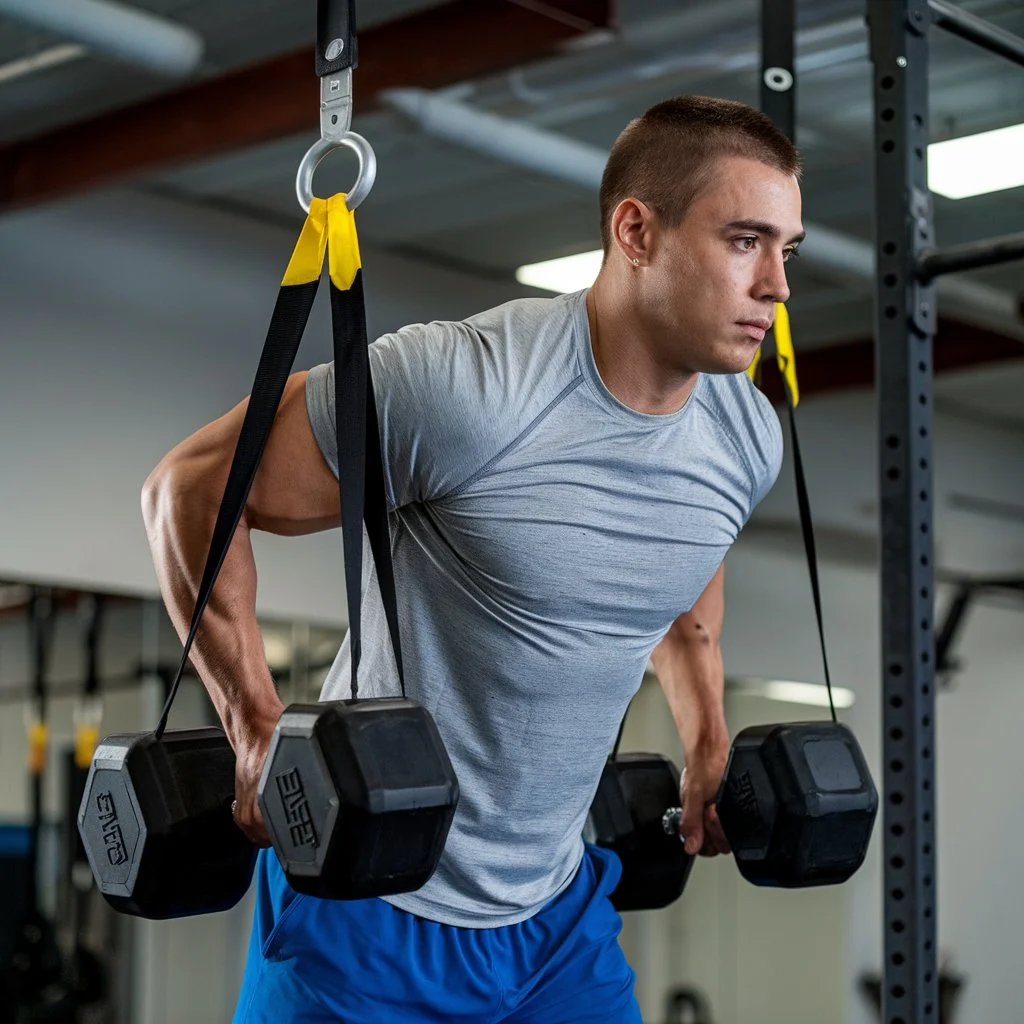In weightlifting, being safe is super important. It keeps people from getting hurt and helps them keep up with their workouts. Dumbbell spotter hooks are like bodyguards during lifting. They make sure nothing bad happens and stop accidents from happening.
Definition of Dumbbell Spotter Hooks
Dumbbell spotter hooks are vital in weightlifting gear. They are also called safety hooks or spotter arms. They are key in power racks and squat racks. They’re put in just the right spot to catch the weight if someone can’t finish a lift, so the barbell or dumbbell doesn’t fall on them and hurt them. These hooks help lifters feel safe to push themselves. They can do so without worrying about getting hurt. This makes weightlifting safer.
Importance of Safety in Weightlifting
Safety is super important in weightlifting. It’s not just about being fit or athletic. Lifting heavy weights can be risky, so it’s crucial to have strong safety measures in place. Whether you’re new to lifting or a pro athlete pushing your limits, focusing on safety helps you train longer without getting hurt. Also, putting safety first creates a culture where everyone looks out for each other. This makes it easier for people to reach their fitness goals with confidence.
Purpose of Spotter Hooks in Weightlifting
Dumbbell spotter hooks are like safety nets for weightlifters. They help keep lifters safe and confident during their workouts. If something goes wrong while lifting, the hooks are there to catch the weight and prevent accidents. This gives lifters the freedom to push themselves harder and try new exercises without worrying about getting hurt. Spotter hooks make weightlifting safer and more comfortable. They let lifters focus on getting stronger and better at their sport.
Types of Dumbbell Spotter Hooks
A. J-Hooks
Description
J-Hooks are ubiquitous safety features found in power racks, squat racks, and other weightlifting setups. They are true to their name. They typically look like the letter “J”. They have a hook-like structure that sticks out from the rack’s uprights. The hook portion is designed to cradle the barbell or dumbbell securely during lifts, while the base attaches firmly to the rack’s frame.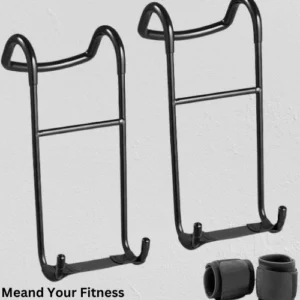
Functionality
The primary function of J-Hooks is to act as catchers in the event of lift failure, preventing the weights from falling onto the lifter. They give a stable rest for the barbell or dumbbell between sets. This allows lifters to move smoothly between exercises without needing to re-rack manually. J-Hooks are often adjustable in height. This lets users set them at their preferred height for their workouts.
Common Applications
J-Hooks are strong and easy tools. They are used in many weightlifting exercises, like squats, bench presses, and overhead presses. They’re important in gyms and home workouts because they keep you safe and steady. Whether you’re lifting heavy or light weights, J-Hooks are there to help you feel secure and protected during your workouts.
People especially like J-Hooks for their simplicity and effectiveness. They are a staple in the arsenal of any serious weightlifter or strength trainer.
B. Safety Arms
Description
Safety arms, also known as safety bars or spotter arms, are horizontal bars that attach to the uprights of weightlifting racks or power cages. Unlike J-Hooks, which have a hook-like design, safety arms feature a straight or slightly angled configuration. They typically span the width of the rack and are adjustable in height to accommodate various lifters and exercises.
Functionality
Dumbbell spotter hooks Safety arms add extra protection during weightlifting. They are especially useful when lifts where failure could drop the barbell or dumbbell onto the lifter. The arms are positioned just below the lifter’s range of motion. They act as catchers, intercepting the weights and stopping them. This happens if the lifter cannot finish a repetition. This feature provides lifters with reassurance and confidence to push their limits without fear of injury.
Advantages and Disadvantages
Advantages
The arms enhance safety. They cover the whole width of the rack. They stop weights at different points in the lifter’s range of motion.
Safety arms can be adjusted to different heights. This lets lifters customize their positioning based on exercise needs and personal preferences.
Safety arms have wide application. They are suitable for a wide range of weightlifting exercises, such as squats, bench presses, and overhead presses. This makes them a versatile and crucial safety feature in any strength training.
Disadvantages
Safety arms are fixed attachments to the rack. They may restrict movement and hinder some exercises or lifting techniques. These require lateral or unconventional barbell paths.
Potential interference is possible. It depends on the design and placement of the safety arms. They may block the lifter’s movement or barbell path. This is especially likely during exercises with dynamic or asymmetrical movements.
They cost more and take up more space. They have safety arms. Racks with simpler safety features, like J-Hooks or pin and pipe safeties, are cheaper and need less space. Additionally, the added weight of the safety arms may affect the overall stability of the rack.
C. Pin and Pipe Safeties
Description
Pin and pipe safeties, also called safety pins or safety bars, are cylindrical bars. They are typically made of steel. They can be put into holes drilled into the uprights of weightlifting racks or power cages. The pins are attached to the rack through a series of holes, allowing for adjustable height settings. When in use, the pins are inserted into the desired height holes, creating a horizontal safety bar that spans the width of the rack.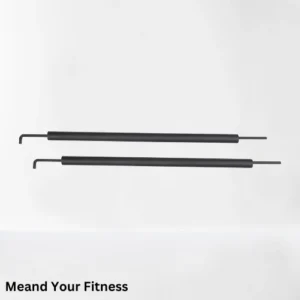
Functionality
Pin and pipe safeties are fail-safe mechanisms in weightlifting. They provide a barrier that catches the barbell or dumbbell if a lifter fails a repetition. The pins intercept the weights when positioned correctly at the right height. This stops them from descending more and reduces the risk of injury to the lifter. Pin and pipe safeties are adjustable. They let lifters set the safety bar’s height to fit their needs for specific exercises.
Use Cases
Pin and pipe safeties are good for many weightlifting exercises. They offer reliable protection and fit into training routines well. Some common use cases include:
Squats: Pin and pipe safeties reassure lifters doing heavy squats. They let lifters squat to depth with confidence. If they fail, the safeties catch the barbell.
During bench press, pin and pipe safeties act as a safety net. They stop the barbell from hitting the lifter’s chest if their muscles fail.
During overhead or shoulder presses, pin and pipe safeties protect against accidents. They let the lifter safely lower the weights if needed.
Rack Pulls: For exercises like rack pulls or partial deadlifts, pin and pipe safeties let lifters set the barbell at varying heights. This lets them target specific muscle groups and lift heavier loads with confidence.
Pin and pipe safeties are crucial in weightlifting equipment. They give lifters peace of mind and let them train safely and effectively.
D. Flip-Down Safeties
Description
Flip-down safeties are safety bars attached to weightlifting racks or power cages that can be flipped up or down from the frame of the rack. When down, the safeties create bars across the width of the rack. They catch the barbell or dumbbell during weightlifting. The bars are typically secured in place with locking mechanisms to ensure stability and safety during use.
Functionality
Flip-down safeties are a reliable safety feature for weightlifting. They provide a quick and easy way to set up fail-safe measures. When lifting, lifters can easily adjust the flip-down safeties. They can do this by flipping them down to the desired height. If the lift fails or the weights get tired, the safeties catch them.
This stops the weights from falling and reduces the risk of injury to the lifter. After use, the safeties can be flipped back up and out of the way, allowing for unobstructed movement and access to the barbell.
Comparison with Other Types
Flip-down safeties have unique advantages and considerations. They have these compared to other types of spotter hooks.
Flip-down safeties provide versatility. They let lifters adjust the height of the safety bars. This allows lifters to customize the setup for different exercises and their preferences.
The flip-down mechanism is convenient and user-friendly. It provides a simple way to set up safety measures. It makes it easier for lifters to train safely without manual adjustments or extra equipment.
They save space. You can flip them up when not in use. This opens the rack for other activities.
Flip-down safeties offer several benefits. But, they may have limitations compared to other types of spotter hooks, like J-Hooks or safety arms. The limits are on weight capacity, stability, and compatibility with certain exercises. Also, the flip-down mechanism may need regular maintenance.
This is to keep it working well and safe over time. However, for many lifters, flip-down safeties are a practical and efficient solution. They make weightlifting workouts safer.
Features and Considerations
Adjustable Height
The ability to adjust the height of spotter hooks is crucial. It lets gyms accommodate different lifters, exercises, and preferences.
Look for spotter hooks that offer multiple height settings. They should have adjustable mechanisms, allowing for precise customization. This customization should be based on individual needs and workout routines.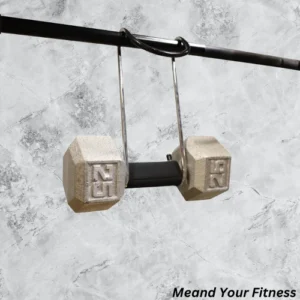
Material and Durability
Description: The material composition of dumbbell spotter hooks directly impacts their durability and longevity.
Considerations: Opt for spotter hooks constructed from sturdy materials such as steel or reinforced plastic, capable of withstanding the rigors of heavy lifting over time without bending or warping.
Compatibility with Equipment
Description: Spotter hooks must be compatible with the specific weightlifting equipment or rack system being used.
Considerations: Ensure that the dimensions and mounting mechanisms of the spotter hooks align with the design and specifications of the rack or power cage to guarantee proper installation and functionality.
Safety Mechanisms
Description: Safety features integrated into spotter hooks enhance protection and minimize the risk of injury during weightlifting exercises.
Considerations: Evaluate the effectiveness of safety mechanisms such as locking pins, safety arms, or flip-down bars in securely supporting the weights and preventing accidents in the event of lift failure.
Ease of Use
Description: Spotter hooks should be user-friendly and intuitive to operate, facilitating seamless integration into weightlifting routines.
– Considerations: Look for features that enhance ease of use, such as quick-adjust mechanisms, ergonomic designs, and clear instructions for installation and adjustment. Additionally, consider the accessibility and visibility of safety mechanisms to ensure efficient and hassle-free usage during workouts.
Benefits of Dumbbell Spotter Hooks
Injury Prevention
Description: Dumbbell spotter hooks serve as vital safety mechanisms, significantly reducing the risk of injuries during weightlifting exercises.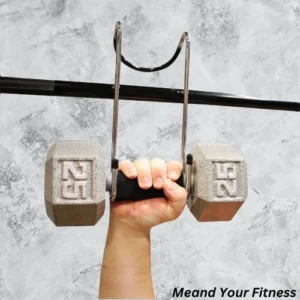
Benefits: By providing a fail-safe mechanism to catch weights in the event of lift failure, spotter hooks help prevent accidents such as dropped weights, barbell slips, or muscle strains, safeguarding the lifter from potential harm.
Confidence Building for Lifters
Description: Spotter hooks instill a sense of confidence and security in lifters, enabling them to push their limits and pursue progressive overload without fear of injury.
Benefits: Lifters can focus on maximizing their strength and performance knowing that spotter hooks are in place to provide reliable support and protection. This confidence boost encourages lifters to challenge themselves, leading to greater gains and achievements in their fitness journey.
Versatility in Workout Routines
Description: Dumbbell spotter hooks offer versatility in exercise selection and training modalities, allowing lifters to explore a wide range of movements and techniques.
Benefits: With the assurance of safety provided by spotter hooks, lifters can incorporate challenging exercises and variations into their workout routines, such as heavy squats, bench presses, or overhead presses. This versatility promotes muscle development, strength gains, and overall fitness progression.
Protection for Equipment
Spotter hooks safeguard lifters. They also protect equipment from damage and wear.
Spotter hooks have benefits. They catch weights before they hit the ground. This prevents damage to barbells, dumbbells, and racks. It extends the lifespan of the equipment and preserves its functionality. This protects the investment in good weightlifting gear. It cuts the need for costly repairs or replacements.
Conclusion
To sum up, dumbbell spotter hooks are really important for safety in weightlifting. They help prevent injuries and make training more flexible and confident. Spotter hooks are like safety nets during lifts.They keep accidents away and allow lifters to push themselves further without worry. When choosing and using spotter hooks, you must think about adjustable height.
Also, think about strength, compatibility, safety, and ease of use. So, for lifters, safety should always come first, and spotter hooks are like trusted friends in their journey to get stronger and stay fit. Let’s keep supporting each other in safe weightlifting. We are building a community that values responsibility, respect, and encouragement.

